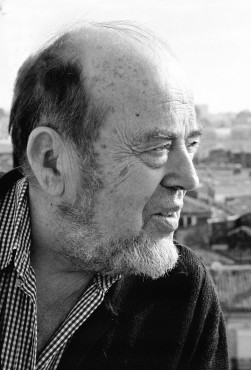Philippe Jaulmes

Curriculum Vitae
Born in 1927 in Montpellier, Philippe Jaulmes practiced as an architect for 40 years. He instigated many of the city’s facilities built during the years 60’ to 80’. He still lives in Montpellier.
From his cursus at the National Superior School of Fine Arts in Paris, he has retained that architecture and cinema were two complementary ways to apprehend and understand space, be it fixed or mobile.
In 1954 he materialized this conviction by conceiving, for his architecture degree, a hemispherical movie theatre designed to show movies shot with “fish-eye” lenses, the design of which he also initiated.
He so happened to create the new Panrama process (patent deposited in 1958) which his company, “les Ateliers du Cinéma Total”, further developed, with its first achievement being the experimental dome nearby Montpellier (Clapiers), followed by the Espace Gaîté public hall in Paris-Montparnasse, where his own films were projected. Actually the Chairman of the CNC (French National Center of Cinematography), during his inaugural speech in 1981 exclaimed: “A page of the story of the cinema has just been turned”.
The Panrama process represents one of the most accurate and realistic existing cinematographic technique to reproduce and mimic the natural vision. Actually Mr. Jaulmes loves to call it “Cinéma Grandeur Nature, Life Size Cinema ”.
Ever inquiring, and his fisheye lens cameras in hands, Mr. Jaulmes has dedicated his life to improving the Panrama process, and the implication of three-dimensional environments on the visual perception of space.
He published several books on this matter, amongst which “L’Ecran Total, pour un cinema sphérique” and recently “Le Cinéma Sphérique“.
Panrama: The Image becomes space
As the first dome projection system ever to use a single film, PANRAMA completely embraces the spectators and takes them inside the image, which is no longer within a frame: it is limitless.
Immerged in the image, the eye is now free and the whole surface of the retina is stimulated as close as possible to real visual perception.
Consequently, the viewer gets an incomparable feeling of space and depth.
Using the recent computer technologies, PANRAMA continues research in small dome-screens (4 to 6 meters in diameter for 10 to 20 people), in developing a specific film language, and in very promising experiments in stereoscopic 3D.
All speakers
Contact
Interested? Questions? Call us:
+49 (0)721 / 8100 6001
or write us:
mailto:info@beyond-festival.com





